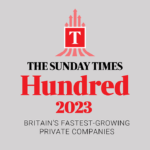Governance
TGG team members play key governance roles at corporate, programme and project level. Our shared understanding of governance across a range of contexts means stakeholders get a truly joined up approach.
We make the connections between business needs and technology-enabled programme management. Our objective is to assure your IT investment generates business value while mitigating the risks associated with technology projects.
Learn More



